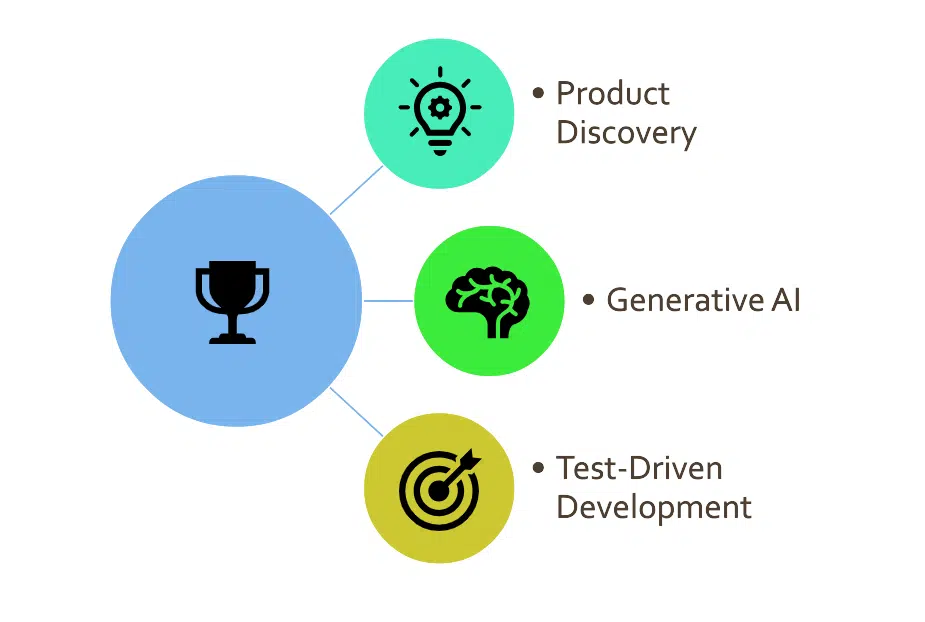In the ever-evolving world of software development, there’s a constant quest for methodologies that not only enhance efficiency but also ensure the creation of products that truly resonate with users. Today, we explore an alternative and robust development methodology that merges three powerful components: Product Discovery, Generative AI (GenAI), and Test-Driven Development (TDD). This triad approach promises to revolutionize how we conceive, design, and deliver software.

The Initial Phase: Product Discovery
The journey begins with Product Discovery, a phase that lays the foundation for successful product development. Here, the focus is on thoroughly understanding and defining what needs to be built. This process involves in-depth research into user needs, market trends, and potential technological solutions. The objective is to identify a product that not only fills a gap in the market but also addresses real-world problems effectively. Techniques like user interviews, surveys, and competitive analysis are pivotal in garnering insights that guide the development process.
The Role of Generative AI (GenAI)
Once the product’s blueprint is laid out, Generative AI (GenAI) comes into play. This innovative technology involves AI algorithms capable of generating new content, including code, architectural solutions, and even design elements, based on established patterns and data. The application of GenAI in software development is not just about automating tasks; it’s about augmenting the creative process, enabling developers to explore innovative solutions and iterate rapidly. It accelerates the development process, allowing teams to focus on fine-tuning and customization.
Ensuring Quality with Test-Driven Development (TDD)
The final piece of this methodology is Test-Driven Development (TDD). This approach fundamentally alters the traditional coding process. Instead of writing code and then testing it, TDD dictates that developers write an automated test for a new function or feature first. Only then do they produce the code necessary to pass the test, followed by refactoring to adhere to standards. This continuous integration of testing ensures that each development phase is validated, leading to higher quality and more reliable software.
The Synergy of the Three Components
The fusion of these three components is where the true magic happens. By initiating the process with a user-centric approach (Product Discovery), leveraging the power of AI for innovation (GenAI), and ensuring quality through continuous testing (TDD), developers are equipped with a robust, efficient, and adaptive methodology. This approach not only reduces risks but also ensures that the end product is aligned with user needs and market demands.
Benefits of This Integrated Approach
- Efficiency and Creativity: This methodology streamlines the development process and fosters creativity, allowing for the rapid creation of innovative and high-quality software products.
- Risk Mitigation: Early and continuous testing in TDD, paired with the exploratory and predictive capabilities of GenAI, helps in identifying and addressing potential issues early in the development cycle.
- User-Centric Design: Beginning with Product Discovery ensures that the development is grounded in real user needs, leading to more relevant and successful software solutions.
- Flexibility and Adaptability: Feedback loops across these stages encourage flexibility and adaptability, ensuring the product evolves to meet changing needs and technologies.
Conclusion
As we stand at the cusp of a new era in software development, this integrated approach presents a compelling alternative to traditional methodologies. It’s not just about building software; it’s about crafting solutions that are innovative, user-centric, and of the highest quality. This paradigm is more than a methodology; it’s a mindset shift that could redefine the future of software development.
This methodology isn’t just a theoretical concept but a practical approach that aligns with the dynamic and user-centric demands of today’s digital world. Embracing this paradigm could be the key to unlocking a new level of efficiency, creativity, and quality in software development.



